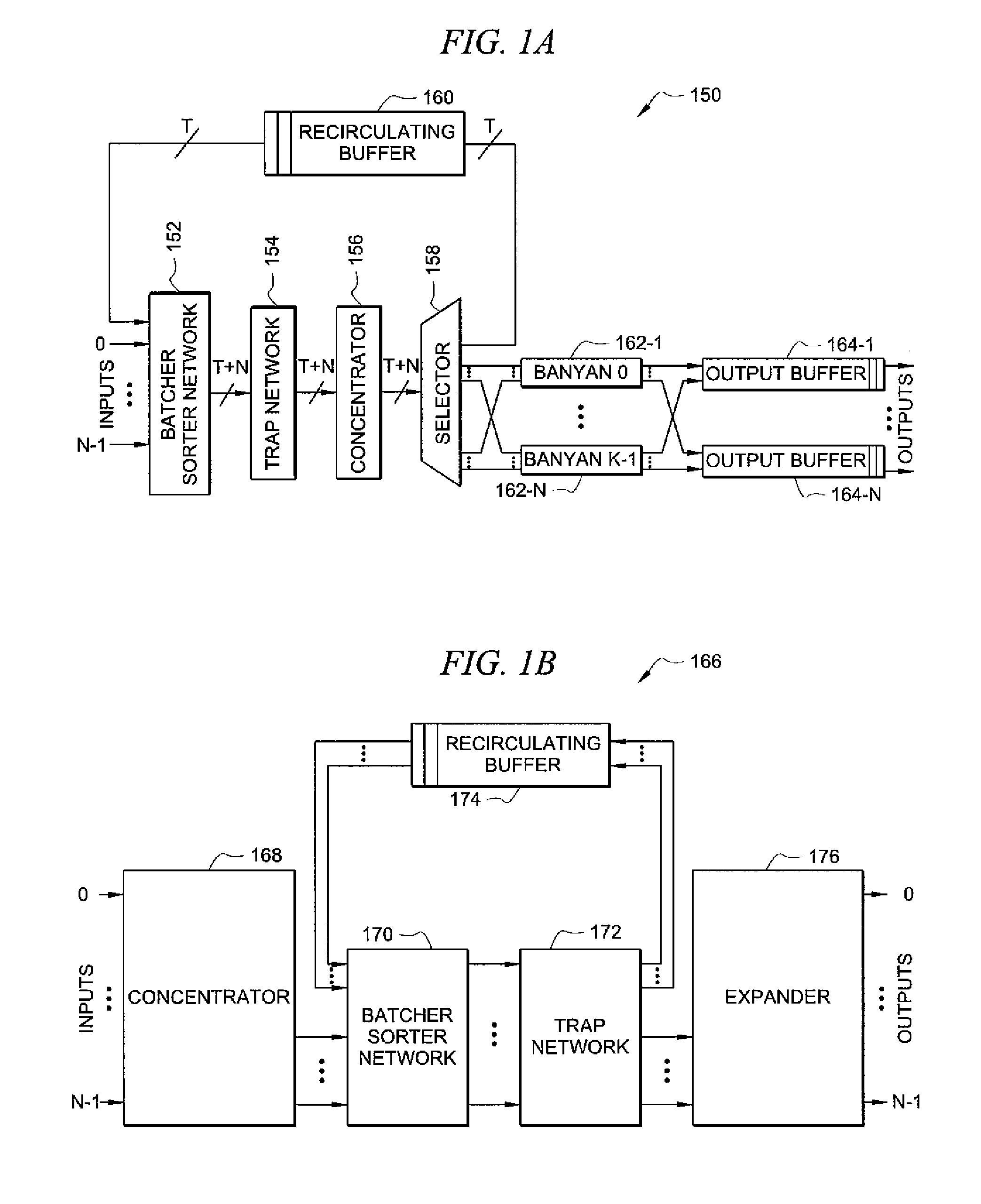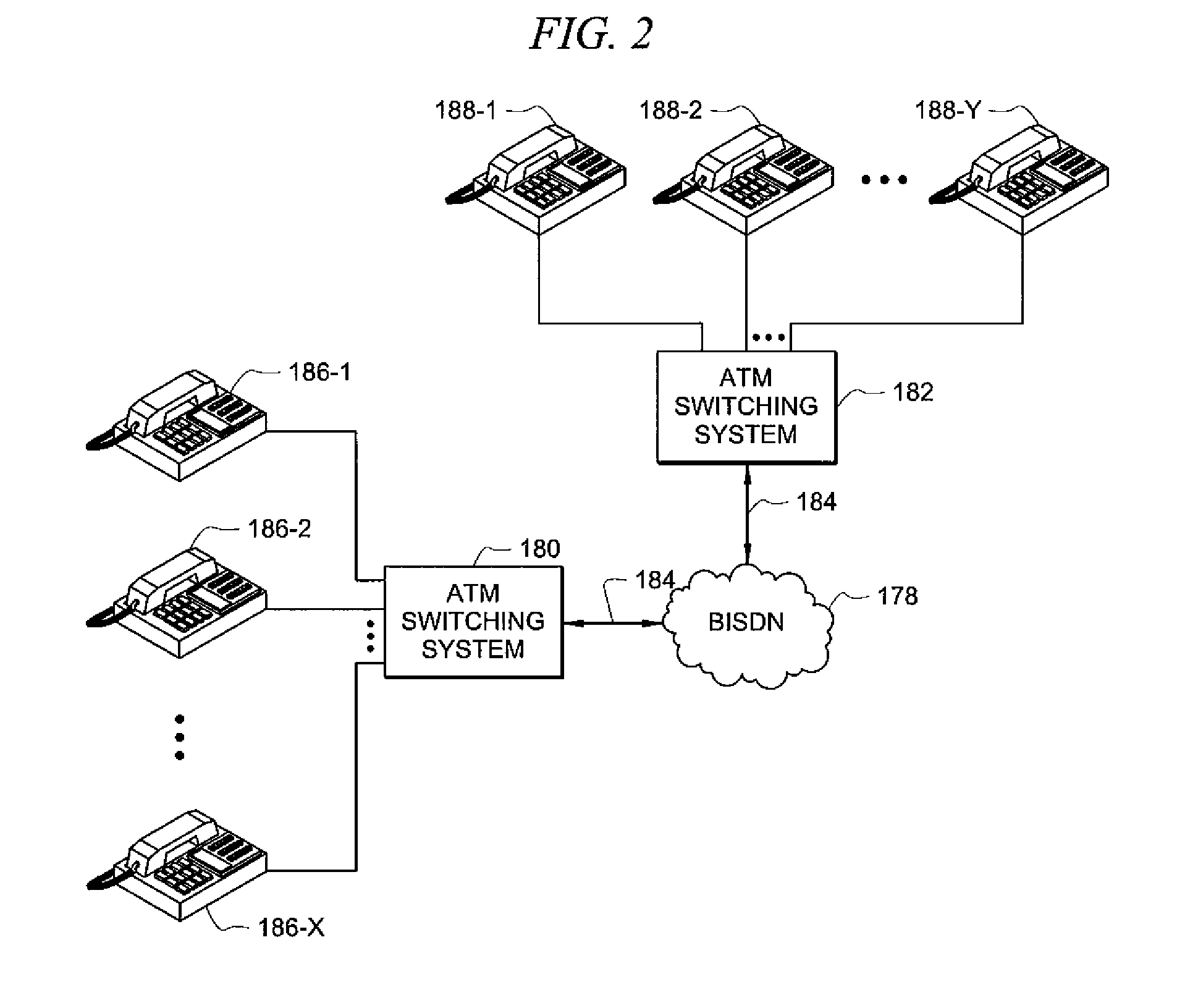Switching system for telecommunication networks
a technology of telecommunication network and switching system, applied in data switching network, frequency-division multiplex, instruments, etc., can solve the problems of crossbar switch square growth of complexity, different input-output pairs of crossbar switch may have different transit delays,
- Summary
- Abstract
- Description
- Claims
- Application Information
AI Technical Summary
Problems solved by technology
Method used
Image
Examples
Embodiment Construction
[0021]Referring now to FIG. 2, a telecommunications network 178 incorporating a switching system 180 constructed in accordance with the teachings of the present invention will now be described in greater detail. As disclosed herein, the telecommunications network 178 is a broadband integrated data services network (“BIDSN”), a telecommunications network having a network architecture which utilizes asynchronous transfer mode (“ATM”) as its communication protocol. Of course, the present disclosure of the telecommunications network 178 as a BIDSN is purely by way of example and it is fully contemplated that the telecommunications network may be any broadband or other telecommunication network utilizing the ATM communication protocol. For example, the telecommunication network may be a private ATM network. Furthermore, the ATM telecommunication network may be configured as either a connection-oriented network service (“CONS”) packet switched network or a connectionless network service (...
PUM
 Login to View More
Login to View More Abstract
Description
Claims
Application Information
 Login to View More
Login to View More - R&D
- Intellectual Property
- Life Sciences
- Materials
- Tech Scout
- Unparalleled Data Quality
- Higher Quality Content
- 60% Fewer Hallucinations
Browse by: Latest US Patents, China's latest patents, Technical Efficacy Thesaurus, Application Domain, Technology Topic, Popular Technical Reports.
© 2025 PatSnap. All rights reserved.Legal|Privacy policy|Modern Slavery Act Transparency Statement|Sitemap|About US| Contact US: help@patsnap.com



